The Fullness of High Summer
Wandering notes from the garden, the road, and the still centre beneath it all
Ah yes, the summer is truly in full swing. My garden is flush with growth. I haven’t the heart to cut back the plants in my veg patch that have marched headlong into seed production-plants that are no longer productive for harvest but have entered another phase of life altogether.
There are hoverflies cavorting on the parsley seed heads, spiders spinning fine threads among the alexander stalks. The nettles are encroaching from the field margins—I let them be. I’ve been watching bumblebees bend the borage flowers under their weight. Already the apple trees are reddening this years fruit, the berries of the hawthorns are just starting to form.
A few mornings ago, I walked into the garden and was delighted by the sight of three juvenile wrens flitting among the lettuce plants (also gone to seed). I knew they were young by the frenzied, excited way they moved-like lambs let loose into a field. It warmed me, because I’ve been watching the adult wrens for months now, noting their favoured foraging spots along the unkempt edges of the garden. They would disappear into the long grass or beneath the great artichoke plants, and each time I saw them, it renewed my resolve to leave those areas as wild as I can. And now, here they were—the next generation.
The swallows, however, are fewer. They no longer nest in my sheds. Just two pairs remain, and I see them most often behind the house, near the cows and their fresh patties. The flies gather there-and so do the swallows, swooping low to hunt. There’s a symbiosis between cows and swallows in this way. Swallows are a species that require transnational co-operation to protect their migration route. They depart South Africa and make multiple stops along the way. If any of those locations are neglected or destroyed the swallows will not reach our shore. Each one that does is a miracle.
And then I’ve had a pair of ravens making frequent transits over the house. Their guttural call announces their arrival. I even spotted two pairs of choughs on the beach beside us-choughs being another, lesser spotted, member of the crow family. I know they are present some 10km away on the Old Head of Kinsale but that was the first time I’ve seen them wander down here. Finally there has been a pair of wood pigeons making this unholy racket in the small apple tree in the front garden. It brought me out of my workshop as I thought they were being attacked, alas no predator present. I now suspect they are having an affair…
A few days ago I delivered a new yurt to some friends of mine.
For those of you who don’t know, I make yurts from April through to August. It’s one of my main focuses during the Irish summer months, and a perfect complement to the rhythm of the rest of my year. My little business is called Nomad Yurts-you can take a look at the website www.nomadyurts.ie or find more behind-the-scenes photos on my Instagram. (@daithisol)
I came to yurt making through a deep love of these structures. There's something ancient and elemental about them-round, grounded, adaptable. They’re built to leave a light footprint. You can feel it when you sit inside: the way the walls breathe, the way the centre invites you, a place for a fire and gathering. They offer shelter without separation and that speaks to something in me.
The first one I made was for myself. I needed a space at a festival I co-created each year-a place for workshops, ceremony, and conversation. That yurt carried so much and it was a journey to build it, it was literally a big learning curve throughout. And then, as often happens, one yurt became two. Word got out. Friends asked. Commissions came. And before I knew it, I had become a yurt maker.
But this work is more than craft or business-it’s an extension of my whole way of living. Building yurts has taught me trust in the arc of a process. It draws me outdoors. It puts tools in my hands and asks me to listen. It's not factory work, especially when i build one out of harvested wild hazel. I sand and oil each wooden pole myself. I load it all into the van and drive through summer roads toward the people and places where it will next take root.
It keeps me busy, sometimes far too busy. But I am my own boss, I choose when and for how long I will work each week. This phase of the year, here in Ireland, it keeps me close to the land. when I can I park up my van somewhere new, I cook on fires, and I keep making things with my hands. It’s the counterbalance to the winter months I spend in Guatemala, where I’m more often in what I call my ‘creative cave’—writing, dreaming, tending the spirit in other ways. There, I feed the fire of vision. Here, I feed the fire of action.
The one I’ve just delivered is a 5-metre diameter yurt that I sold to my friends at a reduced rate. You’ll see it in the photos below-settled now in a field, waiting for its new life to unfold.
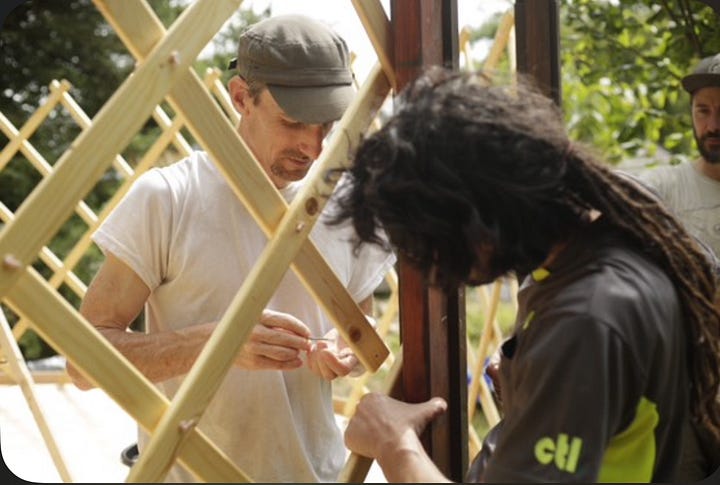
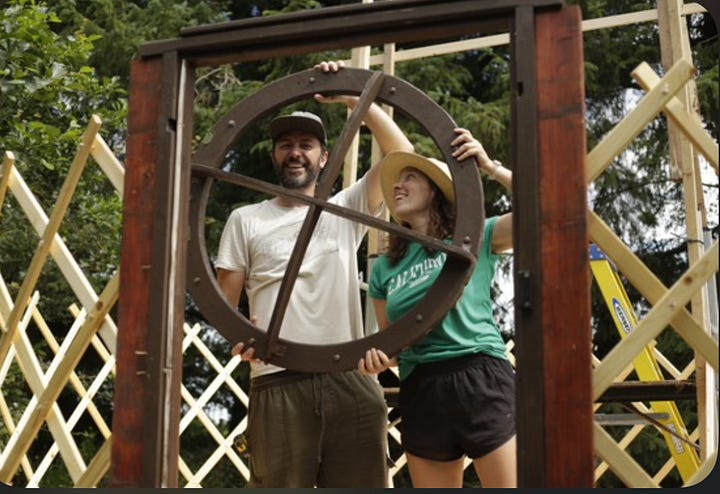
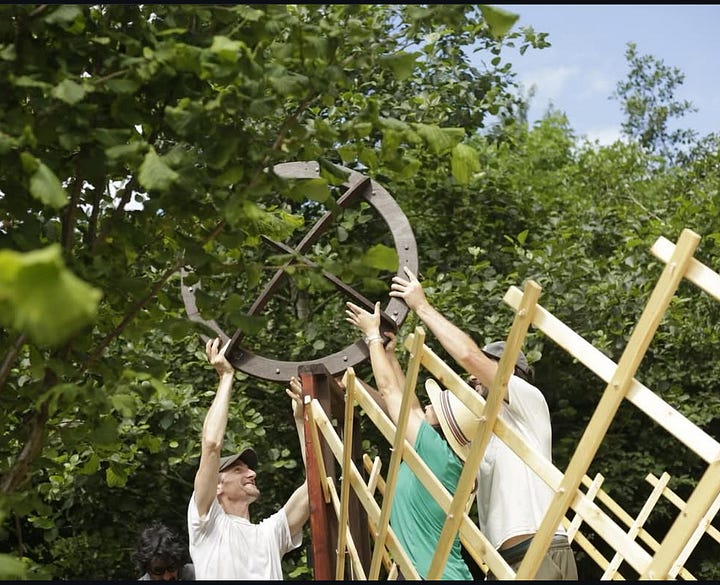
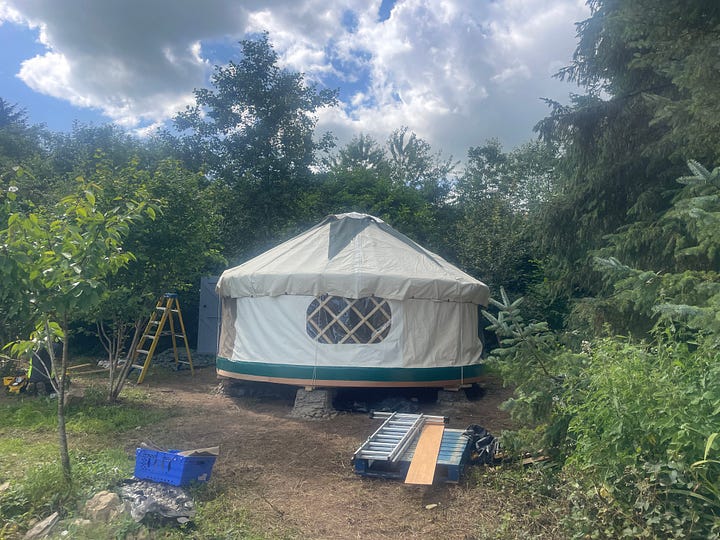
These are the days for packing the van and taking a trip, or spreading out the garden chairs and relaxing with something chilled in the glass. I’m doing both.
Last Thursday, I journeyed to Lough Derg - that beautiful expanse of water that touches County Clare and Tipperary, and just barely, at Portumna, County Galway as well. I travelled north from Cork, swung around the eastern edge of Limerick, and continued upwards until Lough Derg appeared, shimmering in the afternoon heat off to my left. I turned down a boreen and parked up under a stand of trees that hugged the edges of the lake.
There I stayed for a night and a day, giving support to a Vision Quest-a Native American tradition of entering deep silence and spending four days without food or water in nature. It was their final night: six questers, each somewhere out in their own small camps within the forest.
The Quest is held by Louise Allen, who has trained for this over many years with a woman named Heather-herself initiated by elders of the Cree Nation. The following morning, the questers would return to camp - frazzled, exhausted, and intensely relieved—and we would prepare the space for their return. They would be welcomed, fed, watered, and led through a final sweat in the lodge, followed by a glorious jump in the lake.
In the photo below, you can see the central fire that was kept burning 24 hours a day for seven days, and where the stones for the sweat lodge were heated.
So yes, a spell of intensely hot weather has arrived in Ireland-by which I mean 29 degrees Celsius-and I keep finding myself driving through the hottest part of the day. The air conditioning in my van is lousy; its coldest setting is mildly warm.
So yesterday, after the lodge, I turned south again-back to Cork-for a rest and a re-organising of the van. And now this afternoon (this being Saturday as I write), I’m heading northwest to attend a one-day festival in Killarney called Rewild. The name is appealing, for sure, and—as you might see from the photo below-there’ll be a host of music and talks celebrating Irish culture and heritage, before DJs take over as the sun sets, carrying us into the small hours.
So that’s where I’ll be for the day.
As you can probably tell by now, today’s post is a wandering one-a blousey thing, like summer flowers tumbling over each other, unruly and sun-drenched.
These high summer days feel strung together like beads-each one full to the brim with sun, birdsong, and movement. And yet under it all, I can feel the stillness too. The slow turning of the season. The fruit forming on the branches. The long light beginning, ever so subtly, to fade.
I suppose I write today not to report on anything in particular, but to mark this moment-this point in the year where everything is both bursting and beginning to soften. When the garden grows wild, the van is half-packed, and the swallows still circle, for now.
I hope you are well and enjoying whatever and where ever you are.
Until next time.
As always, thanks so much for dropping by.




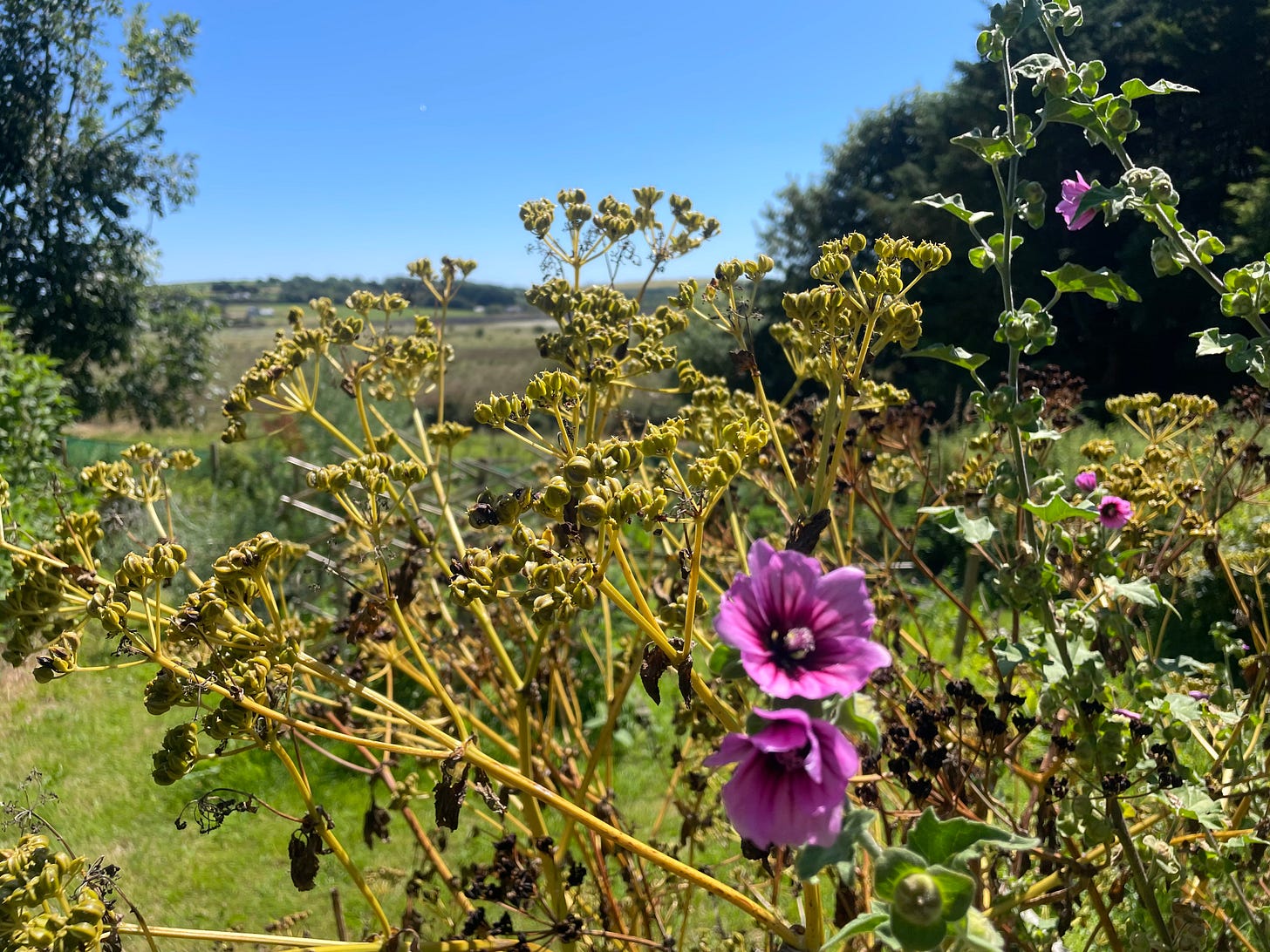
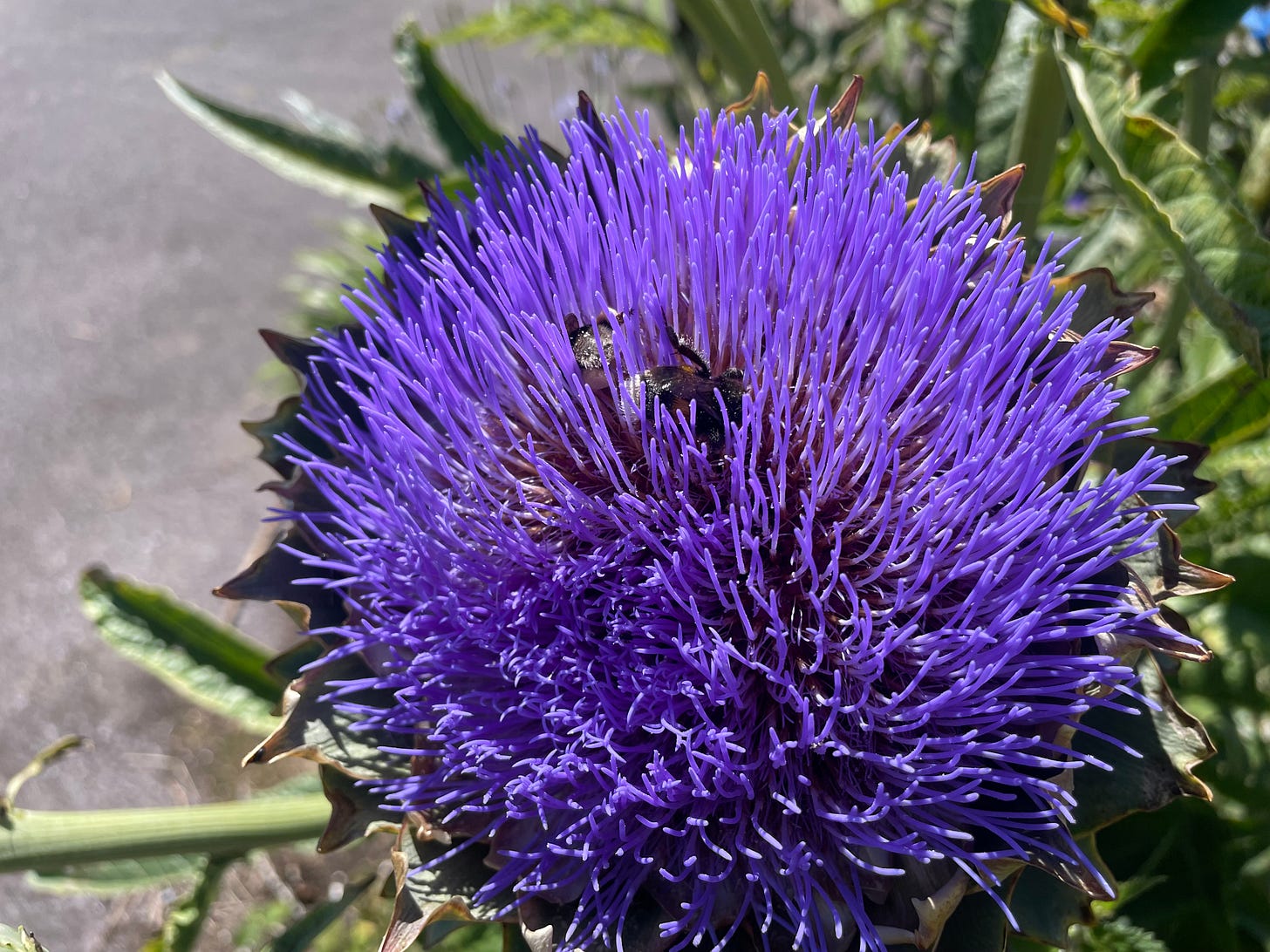

Your garden is teeming with plants and wildlife.
I loved to hear that you have three juvenile wrens flitting about the lettuce plants.They are my favourite birds of all.